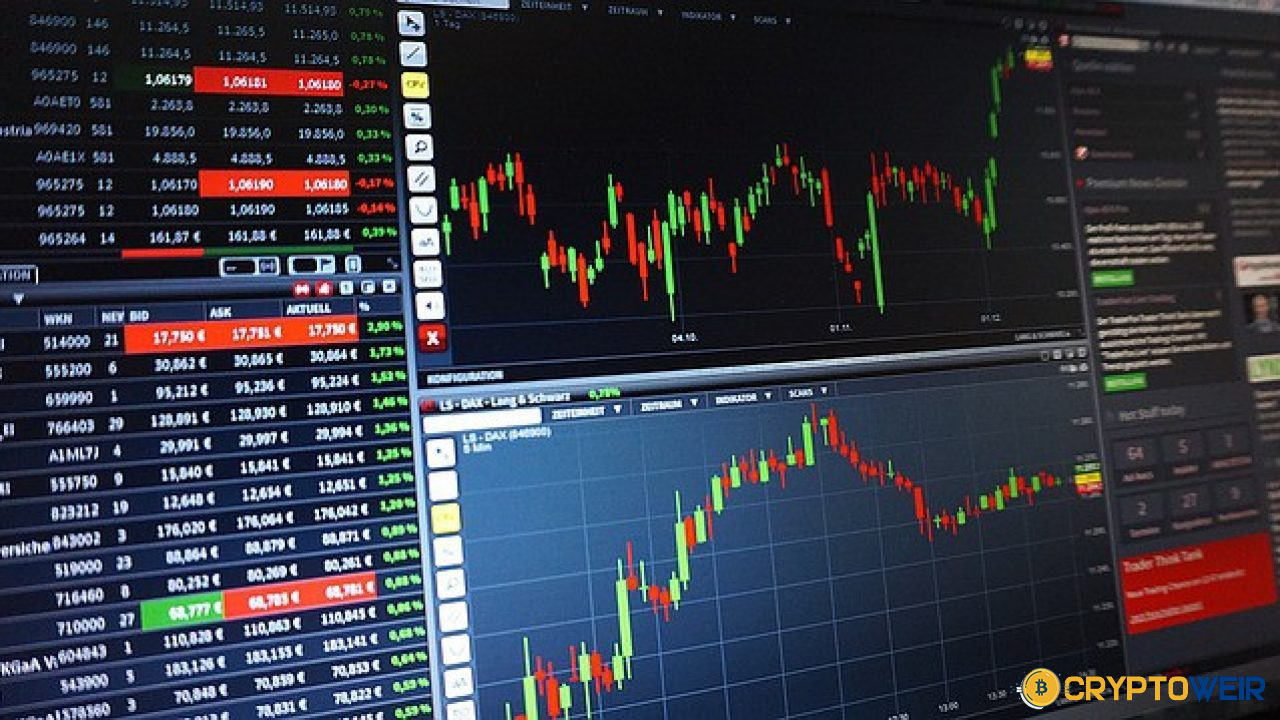Bitcoin price prediction: will BTC rise or fall after Fed rate cuts
Will Fed rate cuts lift Bitcoin? A deep-dive Bitcoin price prediction exploring macro, ETFs, real yields, and scenarios for BTC over the next 6–12 months.

The question on every crypto desk right now: after the U.S. Federal Reserve begins cutting interest rates, does Bitcoin soar—or does BTC surprise with a pullback? Markets are heavily pricing a quarter-point cut at the September 16–17, 2025, FOMC meeting, with multiple outlets citing probabilities north of 90% for a 25 bps move, while a minority still game out a larger 50 bps cut. That macro backdrop matters because lower policy rates can loosen financial conditions, steer flows toward risk assets, and reshape Bitcoin price prediction models for the coming quarters.
Meanwhile, BTC has cooled from an August all-time high near the mid-$120Ks and trades roughly in the $110K–$115K region into the decision, with broader crypto showing caution as traders handicap the Fed’s tone. That means a “dovish Fed” could be a spark—or”a hawkish cut” could keep volatil”ty elevated.
In this in-depth Bitcoin forecast, we’ll map the key drivers: the real wealth and real yields, U.S. dollar dynamics, spot ETF flows, the 2024 halving’s supply effects, and the halving’s risks—then lay out bull, base, and bear scenarios for BTC price over the next 6–12 months.
Why Fed rate cuts matter for Bitcoin
Monetary policy isn’t the only driver of crypto; it’s a powerful one. Rate cuts reduce the risk-free return on cash and short-duration bonds, often pushing investors out of he risk spectrum. That dynamic can buoy equities and digital assets—especially if the Fed signals additional easing ahead. Current market commentary pegs a 25 bps cut as the base case for this week, with some desks entertaining a sequence of cuts through year-end depending on incoming data.
However, it isn’t as simple as “cuts = moon.is n’tger-dated Trea” Inflation-adjusted yields (real yields) can rise or stay sticky even as the Fed trims the policy rate, which can offset the liquidity benefit for risk assets, including BTC. Several analyses in 2023–2025 observed a negative relationship between Bitcoin and U.S. real yields; when real yields climb, BTC has often struggled, and vice versa. That inverse relationship has ebbed and flowed, but it remains a critical macro lever for any Bitcoin price prediction tied to monetary easing.
Bottom line: Fed rate cuts can be a tailwind for Bitcoin, but watch the path of real yields and the 10-year Treasury. If the market anticipates future inflation or fiscal risk, long rates could confound a straightforward “lower rates → higher BTC” story.”
The near-term “etup: positioning, tone, and guidance
Going into an expected first cut of 2025, risk markets are finely balanced. Broad indexes have hovered near highs on the prospect of easier policy, but the reaction function depends on Powell’s guidance. A “dovish cuPowell ‘asizing growth risks and openness to further easing) Typically supports risk appetite; a “hawkish cut” (emphasising inflation vigilance and data dependency) can blunt the impact. Equity playbooks outline this split, and BTC price often reacts directionally with high-beta tech and liquidity proxies.
Crypto-specific positioning matters too. In the days leading up to the decision, Bitcoin dipped modestly as traders trimmed risk, a sign that the upside may require fresh catalysts—either a more dovish path than expected or an acceleration in crypto-native flows.
Structural tailwinds that still support a bullish Bitcoin forecast
1) Spot Bitcoin ETFs have reshaped demand
The January 10, 202,4, approval of U.S. spot Bitcoin ETFs marked a step-change in access for institutions and advisors. Since then, aggregate inflows have periodically surged, offering a consistent on-ramp for traditional capital into BTC. While flows wax and wane, the structural presence of these vehicles underpins many medium-term Bitcoin price prediction models.
By mid-2025, multiple trackers and news services cited tens of billions in cumulative net inflows, reinforcing the idea that BTC price is now partially tethered to ETF demand cycles similar to gold’s post-2004 experience. (Exgold ‘sily flows remain volatile; always verify the most recent data.)
2) The 2024 halving tightened the new supply
On April 2024’s halving, the block subsid2024’sped from 6.25 to 3.125 BTC, cutting fresh supply at the margin. Historically, halving cycles don’t produce immediate vertical don’ts, but they can strengthen the medium-term supply/demand balance—especially when paired with new demand channels like ETFs. This supply shock remains a key pillar in many BTC bull theses for late-2025 into 2026.
Key headwinds to watch—even in a cutting cycle
Real yields could stay firm
If long-term real rates remain elevated due to fiscal concerns or stubborn inflation expectations, the multiple-expansion tailwind can fade. Several reports this year caution that even with Fed rate cuts, longer-term yields may not fall in lockstep, complicating the risk-asset rally narrative. For Bitcoin, which has displayed sensitivity to real yields in prior cycles, that’s the macro caveat.
If the Fed signals only a one-and-done cut or stays highly data-dependent without clear follow-through, markets could fade initial optimism. A slower path would still be preferable to hikes, but it could mitigate the upside in the BTC price in the long term.
The Fin in the short term
Despite strong cumulative inflows, ETFs are not a one-way spigot. There have been weeks of net outflows that coincided with soft price action, reminding traders that Bitcoin still trades as a global, 24/7 risk asset responsive to both macro and micro flows.
Scenario analysis: Will BTC rise or fall after Fed rate cuts?

Below are three plausible paths for Bitcoin over the next 6–12 months. These are not guarantees; they’re frameworks to update as they evolve.
Bull case (probability: moderate)
Set-up: The Fed delivers a 25 bps cut with dovish guidance, and incoming data softens enough to justify at least two more cuts by year-end. Long-dated real yields drift lower as recession risk rises, but inflation stays contained. The dollar eases, global liquidity improves, and spot ETF inflows re-accelerate.
Implications for BTC: In this path, Bitcoin can revisit and potentially exceed its prior ATH, with extensions toward the upper-$120Ks to low-$140Ks in a measured advance. A larger-than-expected 50 bps cut could add volatility, but if framed as insurance against labour softness rather than panic, it might turbo-charge risk assets in the short run. Watch for confirmation in ETF net inflows and falling real yields.
Risks to the bull case: A sudden rise in yields on fiscal worries (deficit, supply of Treasuries) or stickier-than-expected inflation could cap gains even as the policy rate falls.
Base case (probability: base)
Set-up: The Fed cuts 25 bps and emphasises data dependency. Additional cuts remain possible but contingent on labour and inflation. Real yields oscillate in a range; ETF flows are choppy but net positive.
Implications for BTC: BTC price chops between roughly the high-$90Ks and the low-to-mid-$120Ks as the market digests macro noise. The path of least resistance is sideways-to-up, but momentum is punctuated by 10–20% drawdowns typical of crypto cycles. A decisive break requires either a clear acceleration in easing or an apparent crypto-native catalyst (e.g., major institutional adoption milestones, scaling breakthroughs, or a surge in ETF allocations).
Risks to the base case: A negative surprise—no cut, or a hawkish cut—could trigger a quick trip to the bottom of the range. Conversely, “serial” cuts plus cooling real “ields “would push this scenario toward the bull outcome.
Bear case (probability: tail)
Set-up: The Fed cuts but delivers hawkish messaging, and subsequent data re-ignites inflation worries. Long-term yields and real rates grind higher on fiscal or inflation risk, tightening financial conditions even as the policy rate drops. ETF flows turn negative for weeks.
Implications for BTC: Bitcoin retraces toward structural support zones (e.g., mid-$80Ks to low-$90Ks) as real yields weigh and liquidity tightens. In this path, Bitcoin price prediction models that heavily lean on the “cuts = risk-on” principle underperform; macroeconomic factors dominate until the outlook stabilises.
What flips the bear case: Evidence of disinflation returning, a pivot to more aggressive easing, or a decisive improvement in ETF demand and breadth of institutional adoption.
Tactical checklist for traders and long-term allocators
-
Watch the dots and Powell’s tone. Beyond the headline, Powell’s summary of Economic Projections and listen to the discussion about how quickly the Fed is willing to ease. The market’s reaction often hinges on the market’s guidance than the move itself.
-
Track real yields and the 10-year. If 10-year TIPS yields fall, that’s typically supportive of BT. That’s to say, the firm’s upside may be capped even with Fed rate cuts.
-
Monitor the USD trend. A softer dollar often correlates with stronger Bitcoin. If the dollar rallies due to growth or policy divergence, it can put pressure on risk assets.
-
Follow ETF net flows. Sustained positive flows can provide a durable bid; outflows can exacerbate drawdowns. Align your Bitcoin forecast horizon with the cadence of these flows.
-
Respect crypto’s volatility. Even in bull markets, BTC’s price typically sees double-digit retracements. Sizing, hedging, and time horizon discipline matter more than ever around policy inflexion points. (See also recent pre-FOMC chop.)
Medium-term thesis: How the halving and ETFs interact with Fed rate cuts
The 2024 halving reduced incremental supply at the exact moment new demand pipes (spot ETFs) opened. That combination creates a favourable skew for the next cycle—especially if the Fed’s pivot gradually reduces the Fed’s opportunity cost of holding non-yielding assets. Historically, halvings have had lagging impacts; the supply narrative tends to reinforce moves sparked by liquidity and adoption catalysts rather than acting alone. If the Fed embarks on a measured cutting cycle while growth slows but avoids a hard landing, Bitcoin could continue to grind higher on a 6–12 month view—albeit with macro-driven air pockets.
Conclusion
A Bitcoin price prediction anchored solely on “Fed rate cuts equal higher BTC” is too simplistic. The direction and ability of the move depend on Powell’s tone, the glide path of real yield, Powell’s U.S. dollar trend, and the persistence of spot ETF demand. With the 2024 halving constraining new supply and ETFs broadening access, the medium-term skew looks constructive—if financial conditions genuinely ease. Expect volatility around the first cut; the bigger story is the sequence of cuts, real-yield behaviour, and whether flows return in size. For now, the base case is sideways-to-up with tactical air pockets—tilting bullish if the Fed’s pivot is sustained and real yields follow the Fed’s rate.
See More: Bitcoin Price Prediction $150K BTC, $8K ETH & Altcoin Season









